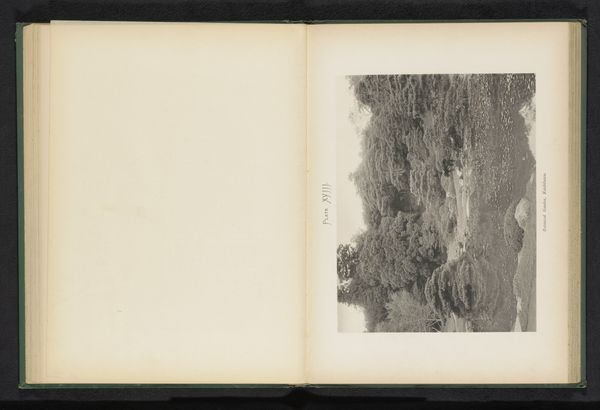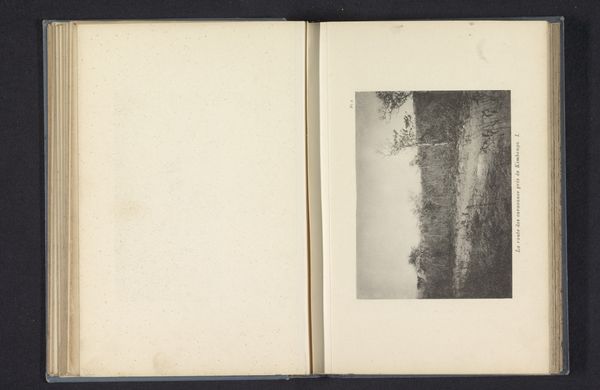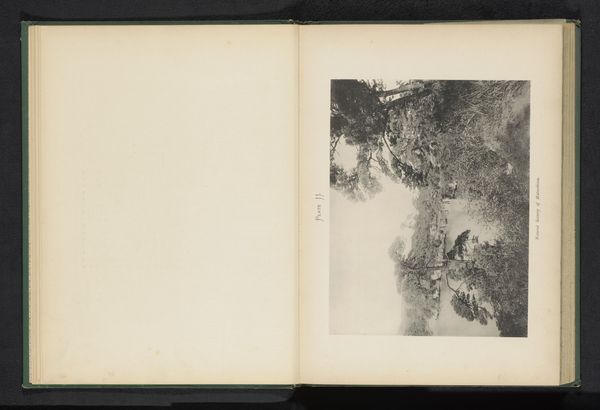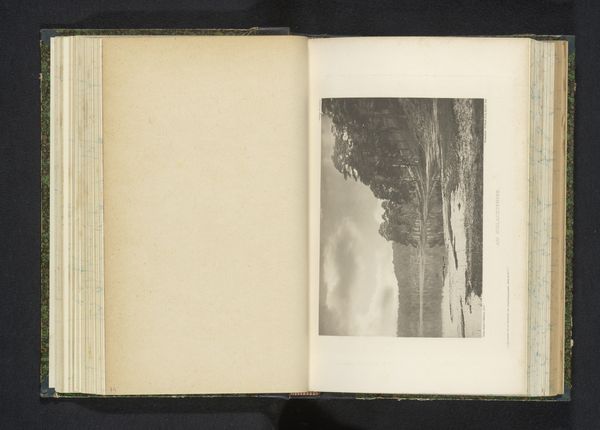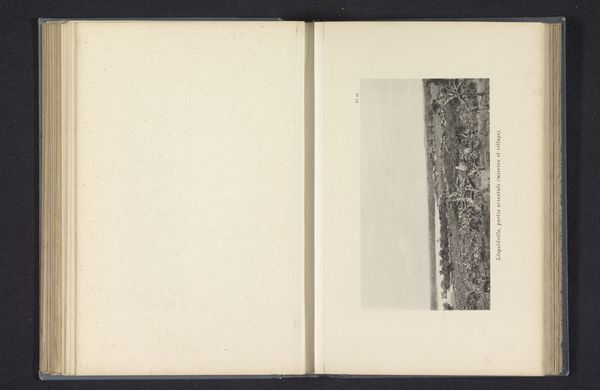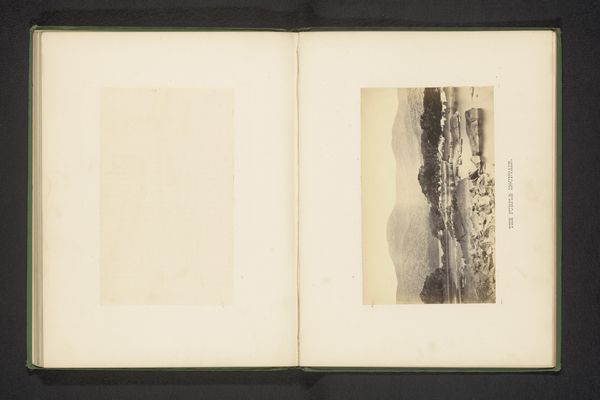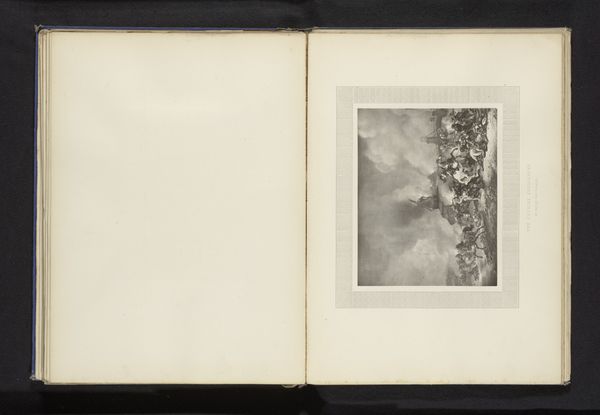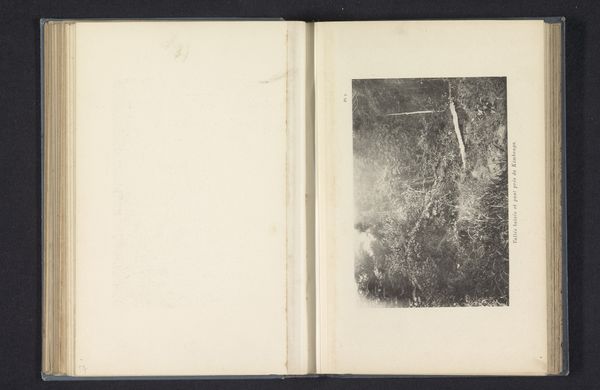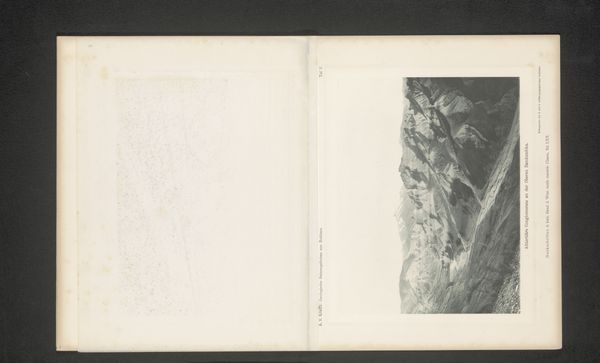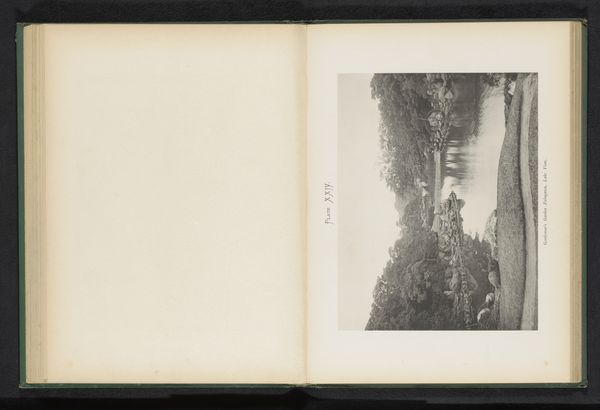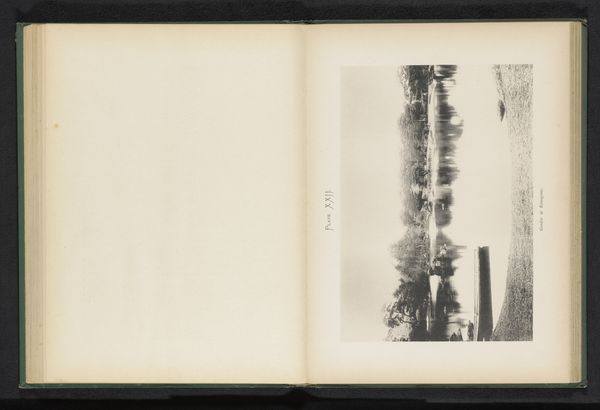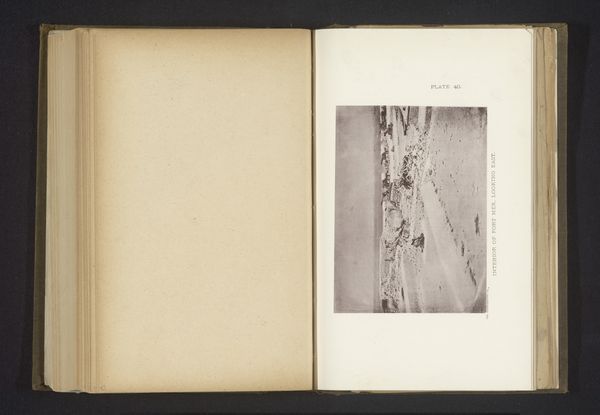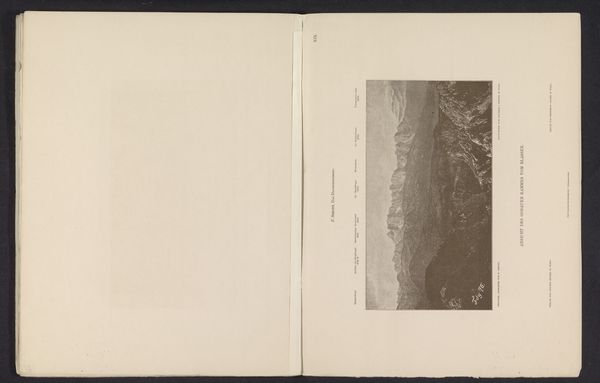
Dimensions: height 198 mm, width 255 mm
Copyright: Rijks Museum: Open Domain
Editor: Here we have Kazumasa Ogawa's "View of a Tea Garden in Fukagawa, Tokyo, Japan," a gelatin-silver print from before 1893. I'm immediately drawn to the texture—the almost overwhelming density of foliage. What strikes you most about this piece? Curator: I'm intrigued by the material processes embedded in this image. Consider the labor involved in not just constructing the tea garden itself—the shaping of the landscape, the cultivation of specific plants—but also in the production of this photograph. Think about the mining of silver for the gelatin-silver print, the manufacturing of the camera and lenses, the very act of Ogawa setting up his equipment and exposing the print. It points to a whole network of industrial and agricultural labor. Editor: So, you’re saying it’s more than just a pretty landscape photo? Curator: Precisely. It's about unpicking the layers of production. The choice of photography as a medium is significant here, as well. How does its capacity for reproduction and distribution affect the consumption of this scene? Is it creating an idealized or a realistic depiction of the Fukagawa tea garden for a wider audience? Consider the "ukiyo-e" tag as well – is Ogawa positioning photography as a modern evolution of that tradition, both in terms of aesthetics and consumption? Editor: That makes me think about the 'orientalism' tag, too. Was this image catering to Western tastes? How did that influence Ogawa's choices in terms of composition and subject matter, knowing who his audience was? Curator: Exactly! The intended audience, and their expectations, shape the means of production and consumption. Where does the “exotic” imagery reinforce existing power dynamics? I think that these photographs – by representing labour intensive industries through the soft nostalgic lens of high art - ultimately mask those industries realities, Editor: This gives me a completely new way of seeing photography! Thinking about the silver and the printing and the global distribution, opens up all sorts of questions beyond just the image itself. Curator: Absolutely. By looking at the materiality, we can unveil complex relationships between production, consumption, and cultural representation.
Comments
No comments
Be the first to comment and join the conversation on the ultimate creative platform.
